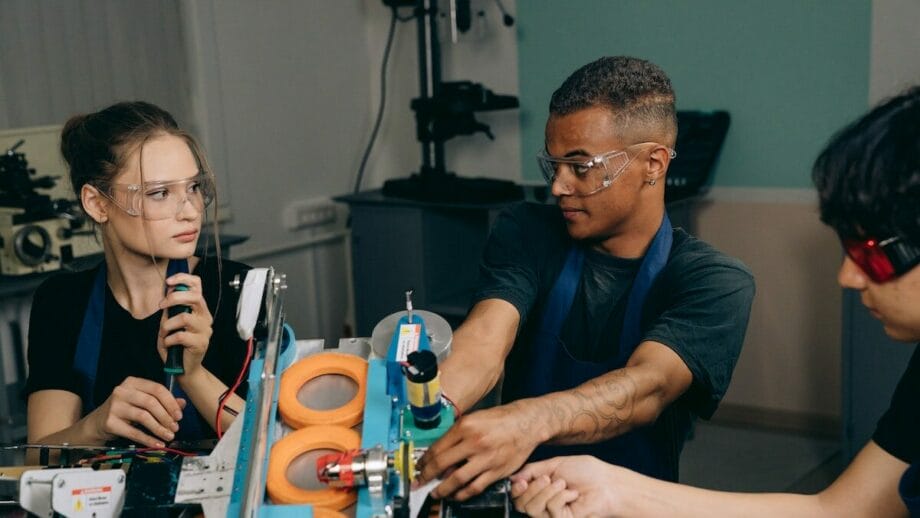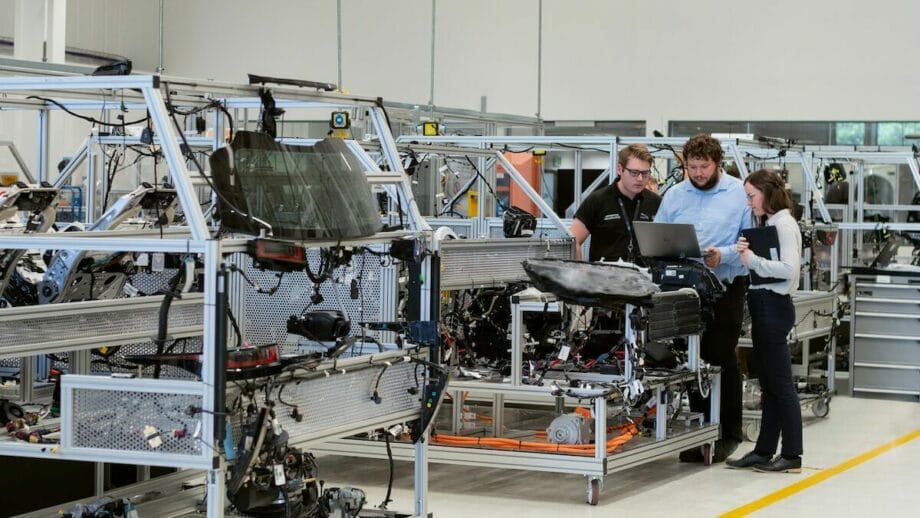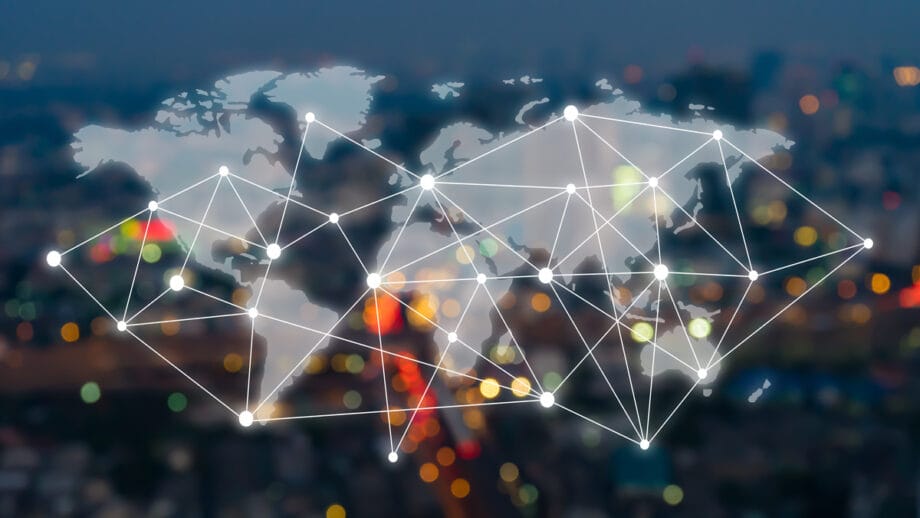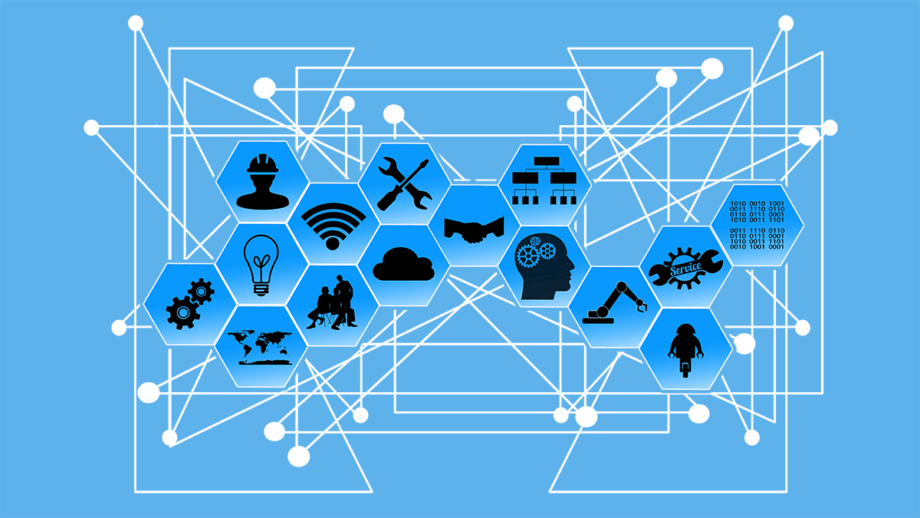The integration of IoT in industrial automation is leading to revolutionary changes in the traditional models of the functioning of industrial enterprises. IoT offers intelligent and very productive solutions for the optimization of production processes, product quality improvement, and cost reduction.
This article discusses the application of IoT in industrial automation, its use cases, and its advantages.
What is Industrial Automation?
Industrial automation can be defined as the use of control systems to automatically manage processes and equipment across a variety of industries. The global industry automation market is consistently expanding and, according to forecasts, it will be about 265 billion USD by 2025. The implementation of computer systems and information technologies in industry enables a major reduction or even total replacement of the amount of human labor.
The primary goal of industrial automation development is to enhance the quality of production, reduce costs, ensure safety, and eliminate human errors.
We are in the era of Industry 4.0, also known as the fourth industrial revolution – it is when digital technologies like IoT, AI, ML, and edge computing are integrated into manufacturing. This allows for a full production change and greatly boosts productivity and efficiency.
Industrial automation uses various components. Below, we list the main ones.
Sensors and Actuators
Sensors are devices that record valuable information from the environment, such as temperature and humidity, pressure, and position, and send them to the control system. For instance, big printing firms like Schattdecor have humidity sensors installed in their production facilities. This makes it possible to ensure optimal production conditions because air humidity affects the quality and speed of paint drying.
Actuators perform physical actions based on commands received from the control system, such as moving loads, hydration, opening or closing valves, etc.

Control Systems
Control Systems are specialized systems used to control and manipulate processes and equipment. They work in real time according to the following scheme:
- Primarily, control systems read input data from sensors;
- Based on the received data and predefined logic, they make decisions and update the output data.
Control systems are used to control different types of processes, such as:
- Assembly lines;
- Robotic systems;
- Heating and cooling systems;
- etc.
Human-Machine Interface (HMI)
Normally, the data from IoT devices and sensors is generally transferred using protocols such as MQTT or OPCUA to a data processing and analytics platform such as Kafka. After data processing, technicians use the HMI to further work with the data.
HMI is the interface through which operators interact with the automation system. This can be a graphical interface, touch screens, or other devices that provide information about processes in real time and provide tools to manage the system manually if necessary, for instance, SAP or Grafana.
Communication Networks
Communication networks consist of on-premises networks configured inside the production to ensure reliable connectivity and minimize costs and networks used to send data to the cloud for monitoring or data manipulation.
IoT in Industrial Automation: Use Cases

Internet of Things technology allows various devices and sensors to exchange information and make decisions in real time. IoT finds wide applications in industry and its significance will only increase. According to the estimates, it is believed that by 2030 Industrial IoT market will reach about $3.3.
IoT sensors gather real-time data about production processes and technical equipment and transmit them to control systems. Control systems use modern technologies like ML and AI to analyze the received data for trends, pattern recognition, or anomalies.
To understand the role of IoT in industrial automation better, let’s look at some cases when it is used.
Remote Monitoring and Control
Connected IoT sensors and devices enable remote monitoring of industrial processes and equipment in real time. This allows enterprises to identify patterns, make changes to production processes, monitor the condition of equipment, detect malfunctions, and eliminate them in time to avoid disruptions in work.
Analytical systems that receive data from IoT devices can send real-time notifications to operators about critical events, for instance, when a system component fails. This allows operators not to spend time checking all the data manually, but to receive notifications only about the most important events.
Predictable Maintenance
IoT sensors collect data on the condition of machines and equipment in real time, which allows operators to be aware of their state and predict possible failures. For example, Amazon warehouses use little dongles attached to package slides to transfer the packages into the trucks. These dongles guarantee reliable transmission conditions so no product would break.
The use of real-time analytics and historical data enables predictive maintenance, which prevents sudden failures and reduces downtime.
Energy Management
IoT sensors collect data about energy consumption at industrial enterprises. Analysis of these data allows them to identify energy losses and areas to optimize energy consumption. This enables companies to implement energy-saving measures and reduce operating costs.
Logistics Simplification
IoT sensors are utilized to monitor the position of products during delivery from the manufacturer to the end user. They also offer real-time data about other key performance indicators like speed, fuel consumption, and so on. The received information enables forecasting delivery times, optimizing routes, and decreasing costs.
Industrial Automation Using IoT: Benefits

The IoT implementation allows faster industrial automation development and gives a lot of advantages to businesses. Let’s consider some of them.
Increasing efficiency
The implementation of the Internet of Things technology into the industry allows technical equipment to effectively interact with each other, exchange data in real time, and respond to requests from other systems. This allows you to increase work efficiency and optimize many processes, for example, inventory management, energy consumption, material and technical support, supply chain, etc.
Cost Reduction
The implementation of IoT in industrial automation reduces costs substantially. Automation of the production and control processes entails a decrease in staff size with savings on salaries. Predictive maintenance avoids the failure of equipment, minimizes downtime, and thus reduces losses. The result of resource optimization is a reduction in energy costs.
Product Quality Improvement
By using IoT devices and sensors you can monitor production processes, and collect information about the quality of products. This enables you to identify deviations from standards in real time and correct production processes, thus increasing product quality with lower waste.
Improving data-driven decision-making
IoT devices and sensors generate massive amounts of real-time data. Enterprises base their strategic decisions on the received information. This allows them to quickly respond to changes in market conditions or requirements.
Improving Workers Safety
IoT sensors can collect data about environmental conditions, such as air quality, temperature, and humidity. When certain indicators deviate from the norm, the system can automatically activate the air conditioning and humidification systems and trigger automatic notifications. This ensures compliance with regulatory standards in production and prevents accidents.
Challenges of Using IoT in Industrial Automation

Industries use IoT for industrial automation, which has many benefits, but firms need to solve some problems for its successful implementation.
Ensuring Data Security
IoT connects many devices and sensors. They might have some kind of vulnerability that makes the system open to cyberattack. Once the attackers get access to a specific device in the system, they may exploit it to compromise the security of all devices.
Thus, in the process of adopting IoT-based industrial automation, it is important to focus on the reliability of the security mechanism.
High Cost of Implementation
The IoT implementation needs considerable investments in building telecom infrastructure, technical facilities, and its integration with legacy systems. Along with that, the staff must be trained to use the new devices in the best way. As a result, the companies have to choose between the benefits and the costs before they decide to invest in oT-based industrial automation.
Data Overload and Management
IoT devices generate massive data in real time. This may result in data overload – a state when the management system fails to monitor and process data as it is too big in volume. Hence, there is a need for the application of a secure infrastructure and effective data management systems for the timeous processing of data.
Furthermore, the amount of data produced by IoT devices that need to be stored requires much space and thus, it results in a high storage cost.
Compatibility Issues
IoT technology uses a diversity of devices, protocols, and standards, which may cause a problem in establishing uninterrupted communication between different devices and systems during its implementation. Hence, you must select trustworthy tools and technologies in the process of integrating IoT into industrial automation. Take, for instance, the case of Node-Red MQTT integration which simplifies data analysis and device management and guarantees smooth communication between devices.
Summary

The IoT technology is extensively applied in industrial automation, and its role is expected to increase. Industrial automation using IoT leads to vast decreases in the need for human labor, increases work performance and quality, and reduces costs.
IoT makes it possible to monitor the production process remotely in real time. It enables early detection and removal of product defects. Predictive maintenance of devices prevents unplanned breakdowns and cuts downtime, therefore cutting losses.
On the other hand, industrial enterprises meet some challenges in integrating IoT. As an example, there is the issue of data security, interoperability of systems, and data management.





